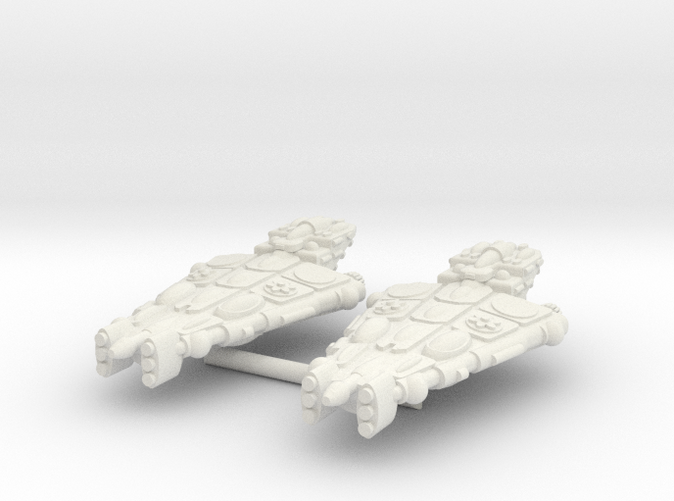Product Description
Royal Elven Kingdoms
Falcon Rost Destroyer (2347)
The Falcon Class Destroyer has had a very long an illustrious history. The very first Falcon class destroyers date back to 1575, in the aftermath of the Dathedi War, being among the first generation of elven ships built under the unified banner of the newly-minted Royal Elven Kingdoms.
Over the past nearly eight centuries, the Falcon destroyer has significantly changed, with only the name and a rough similarity of shape in common between the first Falcons and the present.
The Falcon Destroyers of the previous century suffered from the lack of military innovation. Fundamentally a sound vessel, the Falcon struggled with being a little too generalised.
But when the first projects for the joint Royal Elven Navy and Saiyvalyss Alliance Kallvourassthi (lit. “night sky navy”) were discussed, the Falcon Destroyer was a natural fit. Sheer familiarity with the hull chassis and the expertise built up over centuries of use meant that the Falcon could be most easily adapted for a ground-up prototype. Many subsystems did not require changing, having already been optimised to perfection various configurations over the years. While the Saiyvali had more advanced hull techniques that would be of some benefit, producing a saiyvalyss hull would have required a completely new design and more extensive shipyards, compared to the comparatively lesser investment in systems.
The Falcon’s newest 2347 incarnation thus is serving as a test bed. Built on the tried-and-tested elven hull chassis, the Falcon’s engines have been replaced by more advanced saiyvalyss drives. These match and slightly exceed the Falcon’s previous specifications, bringing an acceleration of 16.9mc and 186 MEUs. This allowed an increase of 6% to the ships’ mass for a little over half the engine mass and volume, and the volume reduction also means the new Falcon is actually slightly sleeker too. A saiyvalyss-tech hyperdrive further increases the Falcon’s FTL speed by 17%.
The Falcon’s 1600TXq shields have been retained, as elven shield technology is superior, but they are now supplemented with saiyvalyss armour-plate rated at 420 TXq AIC for an additional layer of protection.
The sensor and communications systems have likewise been built to saiyvalyss standards, while superior elven secondary systems (towing tractors and teleporters) are retained.
The Falcon’s 1000TXq point-defence lasers have been removed. Additional mass saved from the new engines allowed them to be replaced with a more extensive system of saiyvalyss point-defence blasters and syvri, totalling a net 2210TXq output. With an engagement sphere of 2.34Ym³, more than double the lazer’s 1.1Ym³, the 2347 Falcon has doubled its point-defence capability for only a 50% increase of mass and volume.
The Falcon’s 500TXq spinal lazer cannon remains the centre piece of its anti-capital ship firepower. But with the other improvements, the Falcon’s remaining weapons payload is higher.
Three weapons configurations have been developed and are being tested.
The third configuration, Rost (rain) is a departure from the Falcon’s more typical role as a ship-of-the-line, becoming a missile vessel. The Rost carries the same all-aspect batteries as the Aurë, but the additional lazer cannons are replaced by a pair of missile pods. The initial test loadout has been 96 of the elven standard 230TXq-yield Starspear missiles, capable of being fired in bursts of twelve. The nature of the missile pods means they can be easily re-equipped on a per-mission basis, either with a like number of 224TXq-yield Striking Swallow long-range missiles or 216TXq-yield Zephr Arrow point-defence missile or even up to 112 of the Saiyvali’s more advanced missiles, the standard of which is the 250TXq-yield range.
The new Falcon is, perforce, significantly more expensive to produce, on account of the advanced technology. Even when full production lines are operational, it is expected that the resource cost alone is likely to increase by 27% to 85% over the older Falcon. However, the increase of offence and defence in considered well worth the extra expense.
The Falcons are still undergoing testing to iron out any problems – particularly stemming from the mixed technology, but it is likely that the 2347 Falcon may enter production by the end of the 2348.
